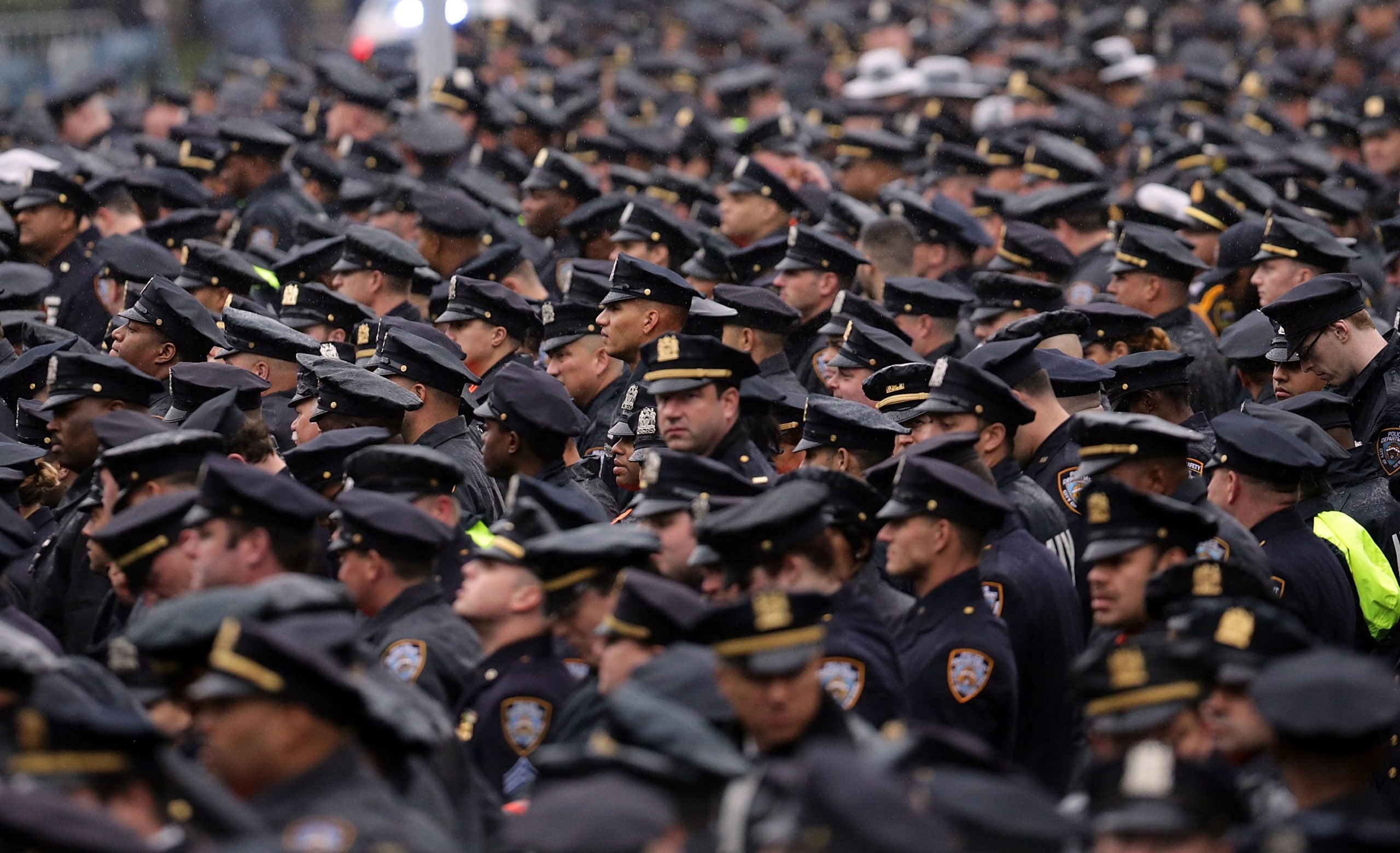Though still near historic lows, violent crime has been rising in the U.S. since 2016. So far this year, murders are up 22 percent across three dozen cities. The increase in violence has created a particularly tense moment: Black and Brown communities say they’re under attack by the police, and form the backbone of protests against police brutality, while the police say their job is exceptionally dangerous, especially amid calls to defund law enforcement.
There’s no disputing that police work remains risky, as a recent case in McAllen, Texas, shows: On July 11, two officers were fatally shot during a domestic assault call. But the “war on cops” that some news reports and police advocates describe isn’t backed up by evidence.
A new study from criminologists Justin Nix from the University of Nebraska Omaha and Michael Sierra-Arévalo from the University of Texas at Austin adds more data to the debate, while rejecting the notion that the profession has become increasingly unsafe.
Here are the facts about officer-targeted violence.
How often are police shot in the line of duty?
In a study published in Criminology & Public Policy on July 20, Nix and Sierra-Arévalo analyzed fatal and non-fatal shootings of police officers between 2014 and 2019. The analysis relies on data from the Gun Violence Archive, a nonprofit that tracks shootings through media and police reports. During the study period, 1,467 local and state law enforcement officers were shot in 1,185 incidents, 249 of which were fatal. That works out to, on average, 245 officers shot per year, 42 of them fatally. The study excludes federal officers, corrections officers, and shootings of officers by colleagues.
Nix and Sierra-Arévalo observed a spike in firearm assaults against officers in 2016, but did not find a sustained increase over the six-year period of their survey.

According to other research, policing has actually become a much safer profession over the last five decades. A study published last year in Criminology & Public Policy found that line-of-duty deaths fell 75 percent between 1970 and 2016, according to an analysis of FBI data.
That said, policing is still a dangerous profession, Nix and Sierra-Arévalo say. “I think we would all agree that being shot at, being wounded by a bullet, amounts to a certain level of dangerousness in a profession,” Nix said. Both authors condemned listicles that rank a variety of other professions as being more dangerous than policing, like fishing, logging, and trucking. “You’re not really sending pizza drivers or truck drivers to very potentially volatile situations in which there’s always at least one firearm and that’s the firearm on the officer’s hip,” Sierra-Arévalo said.
Is policing more dangerous in certain states?
Significantly. The scholars noted a wide divergence between firearm assaults against police at the state level. Mississippi, the state with the highest average rate of firearm assault on police over the six-year period, recorded 2.29 firearm assaults per 1,000 officers, while Connecticut, the state with the lowest number of assaults, recorded .06 firearm assaults per 1,000 officers. (The national mean is .47 firearm assaults per 1,000 officers.) Other states with high rates include New Mexico, Arkansas, Oklahoma, and Colorado. States in the Southeast and Southwest had elevated rates compared to the national average.
While the authors say the reasons for regional differences merit future study, their working hypothesis is that the most violent areas for police may correlate to the number of guns in circulation, permissive concealed-carry laws, and open carry laws.
Previous research has found a link between gun ownership and shootings of police officers. A 2015 study in the American Journal of Public Health found that states with more civilian guns had more homicides of cops: For every 10 percent increase in the firearm ownership rate, there were 10 additional police killed while on duty.
How do officer shootings affect the mindset of police?
In an interview, the study’s authors pointed to a few factors that play a role in how officers think about the risk of being shot: the militarization of police training, a police culture that amplifies tales of downed officers, and the proliferation of guns among civilians.
“What my ethnographic work shows is that police are systematically socialized to understand their work as predominantly dangerous, and to understand that the public is the key driver of that danger,” said Sierra-Arévalo. “So police are trained that there actually is no such thing as a routine traffic stop, there is no such thing as a routine call for service. Instead, they are trained to view the world as full of infinite threats, and to approach a situation as if it might devolve into a fight of their lives at any moment.”
This “warrior” culture has existed in law enforcement circles for decades but has intensified in recent years, as The Trace’s Alain Stephens reported in June.
The proliferation of guns also exacerbates a sense of danger. “I don’t think there’s really any serious argument to be made that the supply of firearms doesn’t influence the level of violent police encounters,” Sierra-Arévalo added.

